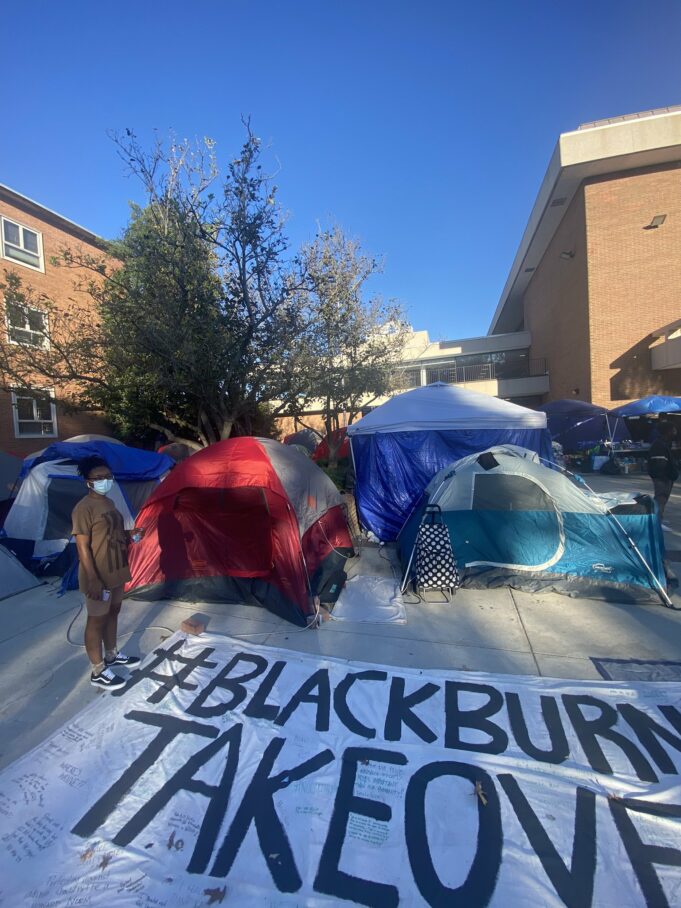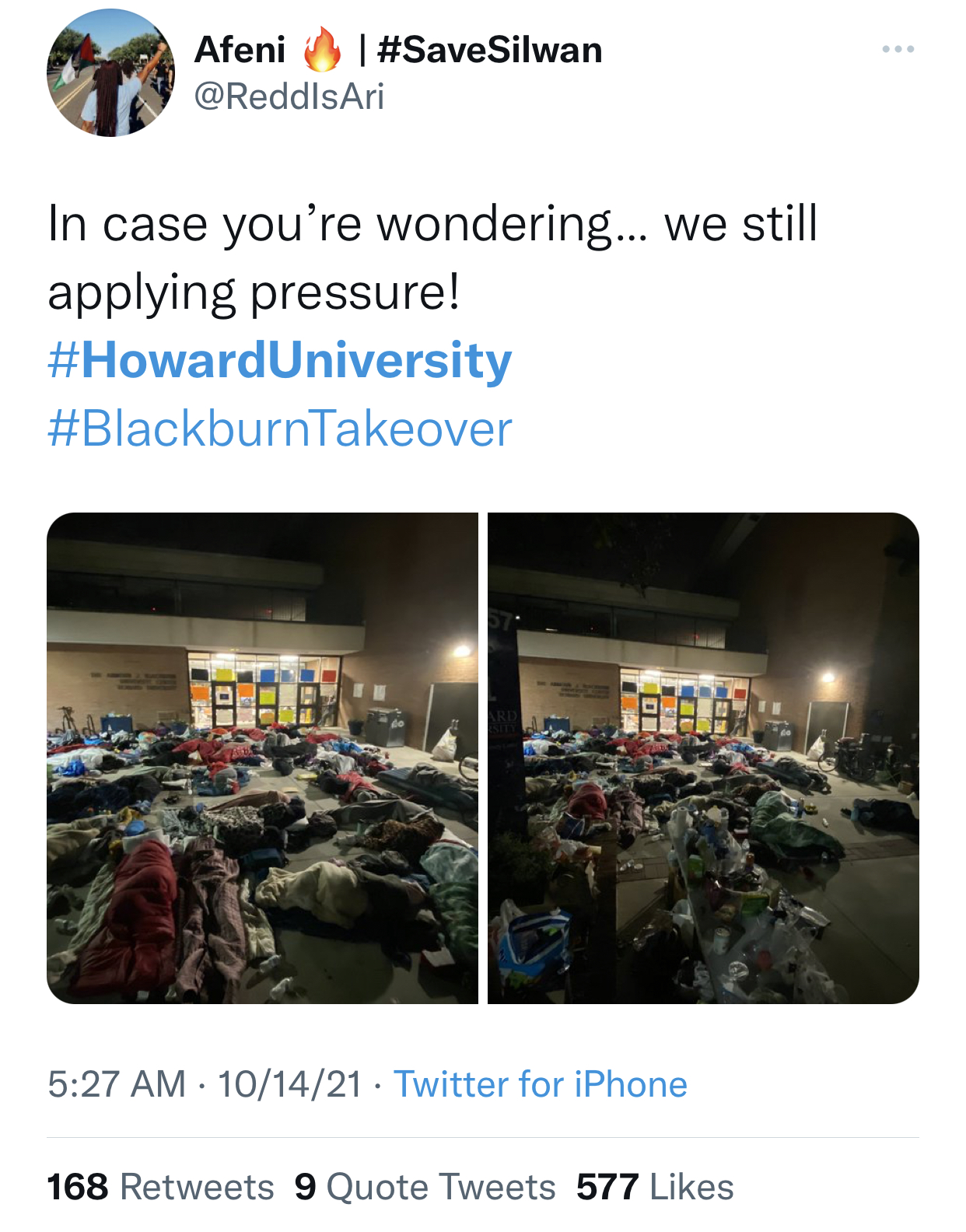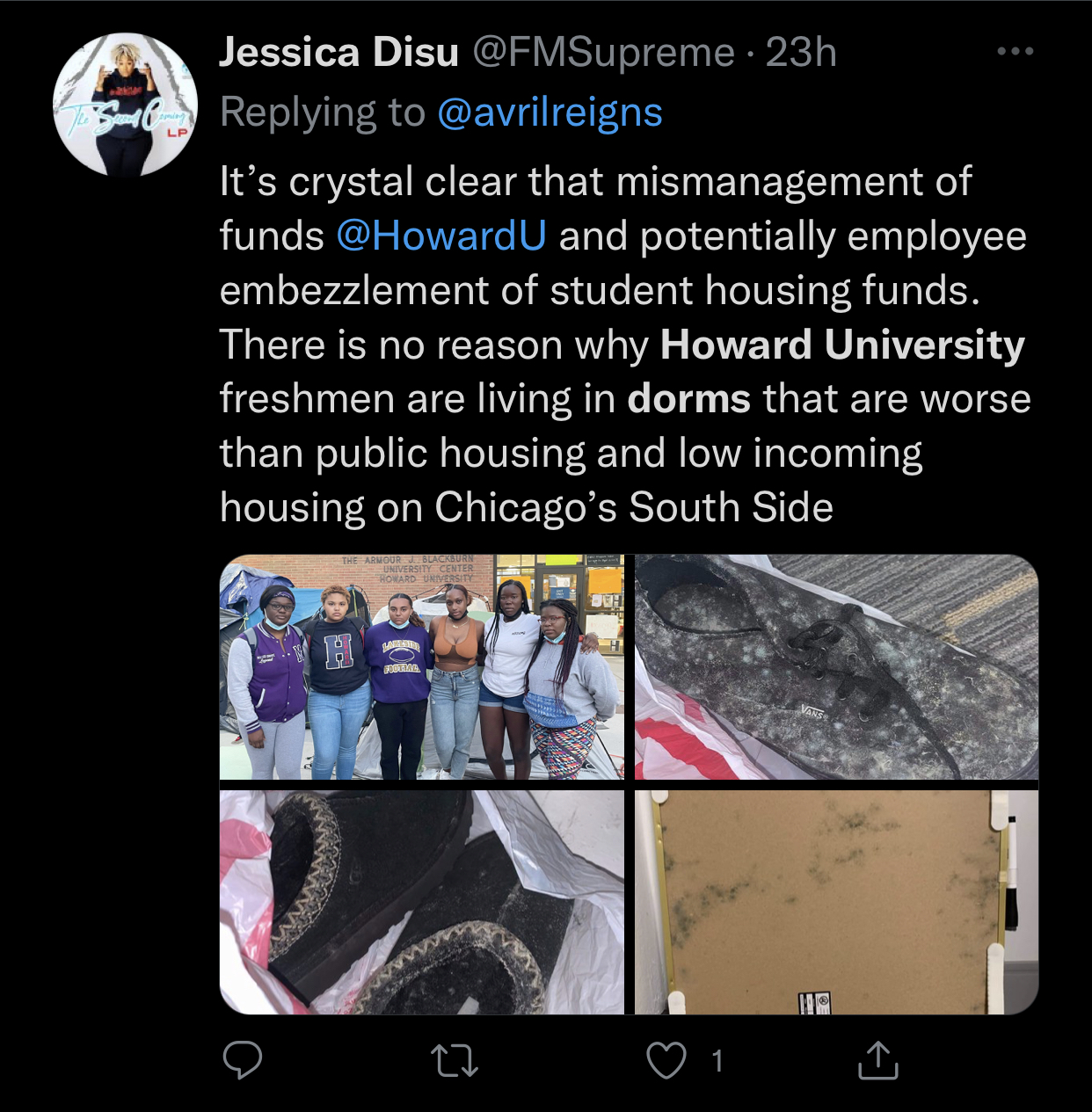When a freshman psychology major at Howard University filled out a maintenance request to deal with mold in her air conditioner, instead of dealing with the actual mold, she said maintenance wiped down, cleaned and sanitized the room.
“My vent has the exact same amount of mold that it had two days ago. They have been saying that they were sucking the mold out of the air. Don’t know what that means,” she said to The Final Call. “We have been getting sick. People have been coughing up blood, going to the hospital with respiratory problems.”
Another student, a freshman television and film major, described that one of the dorms for women has been experiencing excessive mold and that some students have had rats, roaches, pipes bursting and mushrooms growing from the ceiling.
Both students wished to remain anonymous for fear of possible expulsion from the school for speaking out. The students said when they try to switch dorm rooms, the next room also has mold. They said students have had clothes and shoes destroyed due to the mold problem, and students have been living in their cars. They reported that over 40 girls attended a meeting and reported about mold in their dorm rooms and that even more who didn’t attend the meeting have communicated the issue.
The two students have been part of over two weeks of protests on the campus of their Historically Black College/University (HBCU). Howard University students have been crying out to their school’s administration about unsafe and unlivable housing conditions. But they say their voices have gone unheard.
Shootings at Grambling
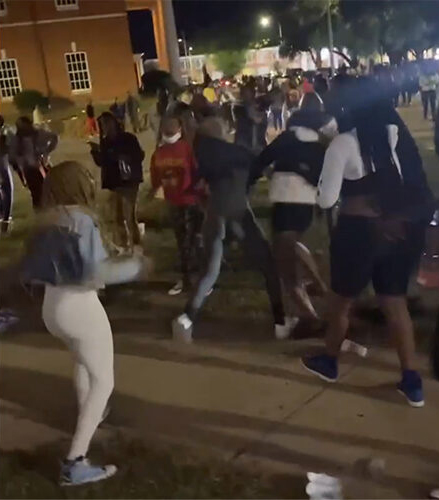
Students and alumni of Grambling State University in Louisiana, located between the cities of Monroe and Shreveport, are also grappling with serious concerns after recent shootings interrupted homecoming activities.
The first shooting, which occurred on Oct. 13, left one person dead and one injured, and the second one, which happened on Oct. 17 at about 1 a.m., left one person dead and seven injured, including one Grambling student who was treated for non-life-threatening injuries. The shootings were perpetrated by nonstudents.
Brandon Muhammad, a Grambling State University alum, said there has been a shooting during homecoming for the past few years, outside of last year, with the recent shootings being the fifth time, and he said the shootings are making the alumni uneasy.
He was on campus with his daughter and son, who are also alumni of the school, when the Oct. 17 shooting took place. He had noticed the crowd, along with the drinking, smoking and loud music, and told his daughter, “No, we’re not staying.” He spoke to other alumni who also left because they could “feel something brewing.”
A few days after the shooting, police discovered four young Black men on the campus who were in possession of handguns and marijuana. The men were not students.
“It’s still an open campus, and that’s a problem. Even the alumni are going back and forth about who should be responsible for that,” Mr. Muhammad said.
He said they haven’t been hearing from the administration what they would like to hear. The city of Grambling is about 91 percent Black. Mr. Muhammad questioned why campus police isn’t working along with city police, considering that the majority of officers are Black.
Grambling State University held a security update with Louisiana State Police Colonel Lamar Davis on Oct. 21. “We really need the community support; we have been here long before homecoming, and we’ll remain here to assist and investigate and ensure public safety throughout this tragedy and beyond,” Col. Davis said.
When Mr. Muhammad attended Grambling State from 1992 to 1997, there were times someone was arrested with a weapon or with drugs, but he said killings didn’t happen.
Blackburn Takeover
As Grambling is recovering from gun violence and implementing measures such as a campus-wide curfew, identification checks and counseling services, students at Howard University have been protesting since Oct. 12 when they organized a sit-in at the Blackburn University Center.
The students have several demands: one, a townhall meeting with university president Wayne Frederick and the administration; two, reinstate students, faculty and alumni to the Board of Trustees with voting power; three, for the administration to outline a housing plan; and four, to have complete academic and legal immunity.
The students interviewed said more specifically, they need the inside of the air vents and walls to be wiped out. They also said they have been pushing for more housing.
On June 11, university officials announced that they would phase out trustee positions for students, faculty and alumni.
“We’re the ones that live here. How can we tell our story and what we need fixed if we’re not on the Board of Trustees making the decisions with them?” one of the students questioned.
Vie Towers, an apartment center located in Maryland, is providing shuttle buses for Howard students to have access to housing. The students accused the university of refusing a partnership that representatives from the center offered to school officials.
“What’s really funny is they refused it, but a lot of their students are in cars, living outside, have nowhere to live, literally depend on just resources and everything that’s provided from alumni and other organizations to help us stay out here,” one of the students said. “And the fact that they are not letting them help us is crazy, because they’re not even giving us input on what they’re trying to do right now.”
The two students also questioned where university funds are going.
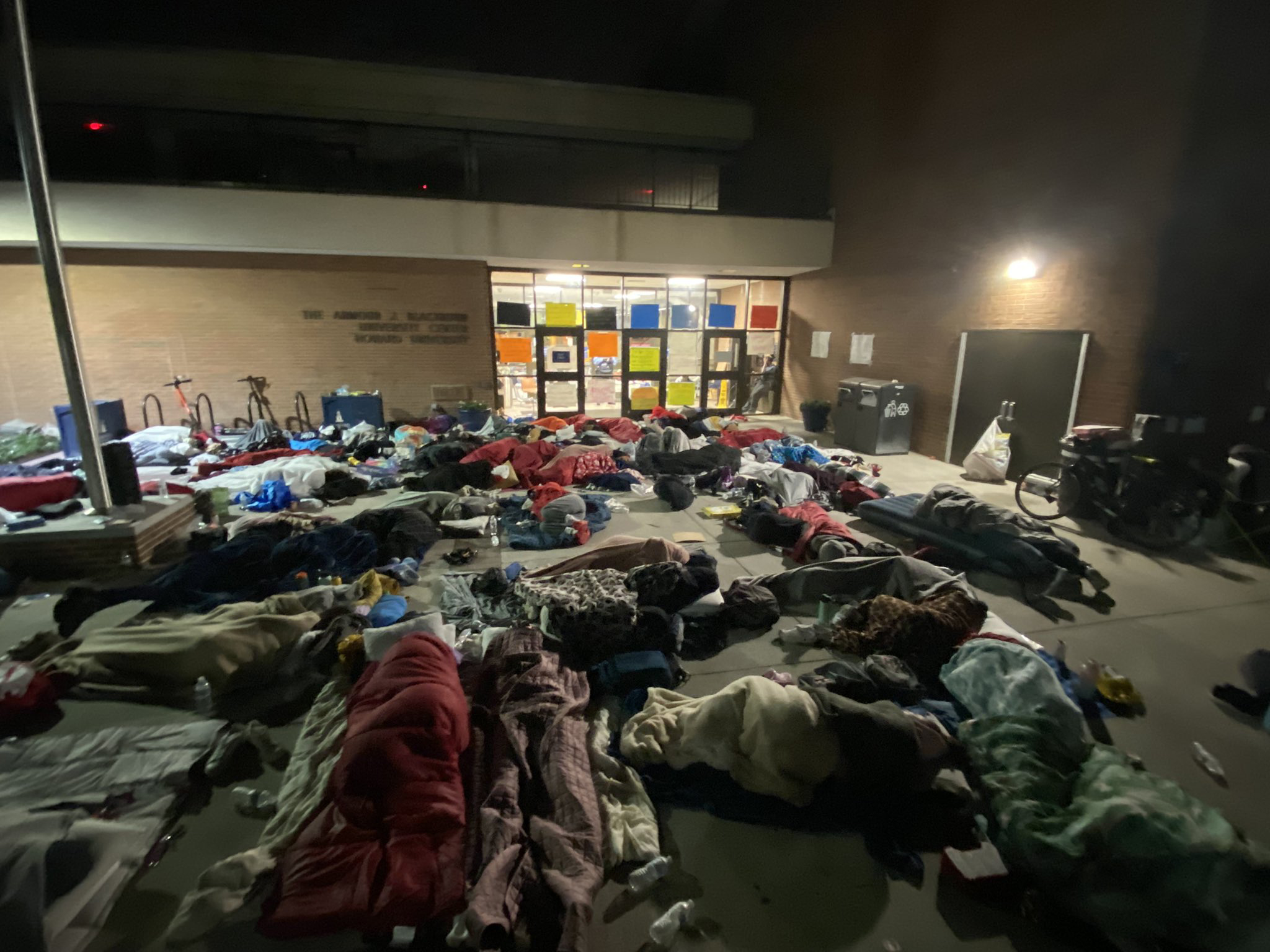
“They want to paint this pretty picture of all this stuff, but if you really live here and look around, we are not being treated the way we are supposed to be treated. And it’s very saddening because this was my number one school. This is the school that I’ve been wanting to go to since I was young. This was always my school,” the freshman psychology major said.
“I live in Virginia, and I did not want to go to a school close, but the fact that Howard has such a big impact on me, I still came here. And the fact that I’m experiencing all of these things is crazy to me, because this is not what I’ve seen in videos, and this is not what I’ve seen in open houses. This is not what people say. And now this is all being brought to light during a pandemic as well.”
Amid protesting, students have also had to deal with the regular hustle and bustle of college life, such as midterms. The students said though most of their classes are virtual, they’ve still struggled because of Howard’s “spotty Wi-Fi.” They said some buildings on campus haven’t had Wi-Fi since they first arrived in August and that ever since the Blackburn Takeover happened, the Wi-Fi has been turned off.
“Accomplishing these assignments, these midterms essays, everything is very, very difficult. But luckily there have been a good amount of teachers who have given and shown their support towards the Blackburn protest,” they said.
Despite the campus activism taking place, Howard University moved forward with Homecoming plans. Students participating in the Blackburn protest boycotted Homecoming and formed their own plans, including a step show that took place the night of Oct. 21, block parties and a yard fest.
Atlanta in Solidarity
The Blackburn Takeover has inspired students attending Atlanta HBCUs to not only stand in solidarity but to also roll out their own list of demands to their respective colleges. Atlanta HBCUs include Clark Atlanta University, Morehouse College, Spelman College and Morris Brown College.
According to social media posts under the hashtag #ASMTakeover, or Atlanta Student Movement Takeover, students are demanding for the presidents of all four schools to meet with their respective student leaders to discuss a full assessment of student housing needs and quality of life and for Georgia Senators Jon Ossoff and Raphael Warnock and U.S. Representatives Lucy McBath and Nikema Williams to meet with organizers to discuss the $45 billion investment in HBCUs through President Joe Biden’s Build Back Better Act.
The president’s Build Back Better Act initially included $45 billion for HBCUs, but the latest iteration of the bill includes about $2 billion that will go towards educational programs and infrastructure for Black colleges, according to the Associated Press.
Students are also demanding for the senators and U.S. representatives to communicate with the Biden-Harris administration to release the legal memo from the Education Secretary Miguel Cardona detailing President Biden’s power to cancel student loan debt.
History of Black student activism
Howard alum Melech Thomas, senior pastor of Bethel AME Church in Selma, N.C., started at the school 15 years ago. He was a resident assistant for two years and served in student government. Mr. Thomas was also a part of a takeover of the Administration (A) Building in 2008. Students occupied the A Building for nine days until university officials promised to meet their demands.
“The same issues that we had when I first got there in 2006 are the issues that our students are protesting today, and the ways that they have been excused for so many years is that these inadequacies build character, they strengthen relationships, they teach us how to survive,” he said.
“But at some point, we have to recognize that our students could probably do so much better if they didn’t have to worry about the mold, which I had in my dorm, if they didn’t have to worry about the leaks, which I had in my dorm, if they didn’t have to worry about the roaches and the rats, which I also had in my dorm 10-12 years ago.”
His family has been connected to Howard for over 60 years. His mother worked at Howard, and his father attended in 1963. “Howard is in my blood, but Howard needs to be held accountable, and it cannot continue to ignore the voices of its students,” he said.
He explained that there has always been an undercurrent of radicalism at Howard, marking 1968 as a boiling point.
March 19, 1968, about 1,000 Howard students rallied, and a group occupied the A Building and demanded institutional changes, including teaching Black history. The students also called for the president at the time to resign and a judiciary system for student discipline.
“This kind of divergence between a student body that is interested in creating Black radicals, transforming Black thought and creating a ‘mecca’ for Black America is contrasted with an administration which is interested in conforming,” Mr. Thomas said.
He said Howard alumni have been making their voices heard and have been organizing around the issues before the Blackburn protests started.
Black students are no strangers to campus activism. In recent years, students at the Atlanta HBCUs have increased displays of activism. As the #MeToo Movement, a campaign against sexual abuse and sexual harassment, swept across the country in 2017, Spelman and Morehouse students demonstrated, saying their colleges protected rapists.
Black students were heavily involved in activism in the 1960s and 70s. The Student Nonviolent Coordinating Committee (SNCC) formed from students protesting segregated lunch counters.
Former president of the North Carolina A&T History Club and community historian Danita Mason-Hogans pointed as far back as the early 1900s, when students challenged Booker T. Washington and W.E.B. DuBois’ ideas about education.
Being a part of the History Club as well as the Afro-Centric movement, by the time she was a senior, she and other students advocated and got six hours of required Black Studies for all incoming freshmen at North Carolina A&T.
She explained that today, Black people must look at the history of HBCUs, who started them, whose money funded them and who is still funding them. Out of 100 HBCUs in 19 states, Howard, a private institution, has the highest endowment with over $700 million. But as a whole, the 10 largest HBCU endowments in 2020 totaled $2 billion, compared to the $200 billion in endowments across the top 10 predominantly White institutions, according to the Brookings Institution.
“We still are subject to the whims of White folks in a lot of ways, White people in power, or people in power. So, we have to watch what we say oftentimes, but the students are free from that,” she said. “I think the administrators might be thinking about, okay, we want this new gym for our school, so we’re going to have to appeal to the legislature to get that. And if we talk about some of these issues on campus that are valid issues that we may even agree with in private, then that would maybe put in jeopardy the funding that we might receive.”
Ms. Mason-Hogans explained Black alumni associations need to be more political, but that “you also cannot separate the fact that we are not as free as White people. Most of us are a paycheck away from poverty. So, we still are beholden to the same structures that our children are.”
Brandon Muhammad referenced a quote by the Honorable Elijah Muhammad, Eternal Leader of the Nation of Islam, saying unity is key. He said HBCU students need to function and operate as one, and that when one campus is having an issue, students from other campuses need to show up, be in support and start putting pressure on anyone working against students.
Ms. Mason-Hogans said young people who are resisting and protesting are doing exactly what they need to be doing.
“As long as you have oppression, you’re going to have resistance,” she said. “And I believe that in this country, Black people, particularly those students from HBCUs, have always led the way and fought.”












